Order Rheiformes Rank Genus | Phylum Chordata Higher classification Rheidae | |
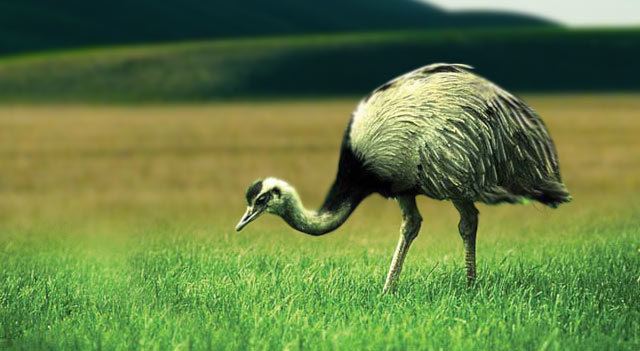 | ||
Similar Bird, Emu, Cassowary, Darwin's rhea, Ostrich | ||
The rheas /ˈriː.ə/ are large ratites (flightless birds without a keel on their sternum bone) in the order Rheiformes, native to South America, related to the ostrich and emu. There were formerly two, but now three recognized extant species: the greater or American rhea (Rhea americana), the lesser or Darwin's rhea (Rhea pennata) and the puna rhea (Rhea tarapacensis). The greater and puna rheas are currently rated as near-threatened in their native ranges, while Darwin's rhea is of least concern; a feral population of the greater rhea in Germany appears to be growing.
Contents
- Etymology
- Taxonomy and systematics
- Description
- Distribution and habitat
- Individual and flocking
- Diet
- Reproduction
- Status and conservation
- Human interaction
- References
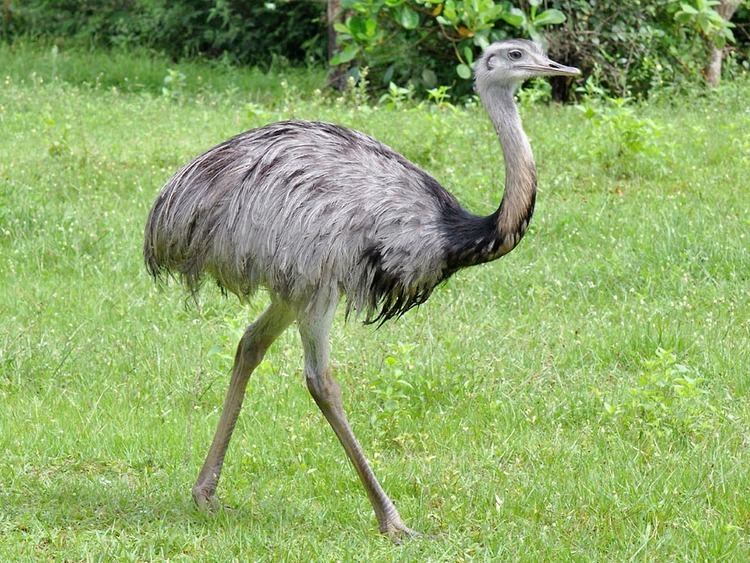
Etymology
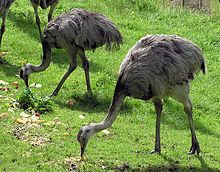
The genus name was given in 1752 by Paul Möhring and adopted as the English common name. Möhring named the rhea based on the Greek Titan Rhea, whose name is derived from the Greek Rhea (῾Ρέα) from έρα "ground". This was fitting, the rhea being a flightless ground bird. Depending on the South American region, the rhea is known locally as ñandú guazu (Guaraní, meaning big spider, most probably in relation to their habit of opening and lowering alternate wings when they run), ema (Portuguese), suri (Aymara and Quechua), or choique (Mapudungun). Nandu is the common name in many European languages.
Taxonomy and systematics
The two recognized extant species and eight subspecies are:

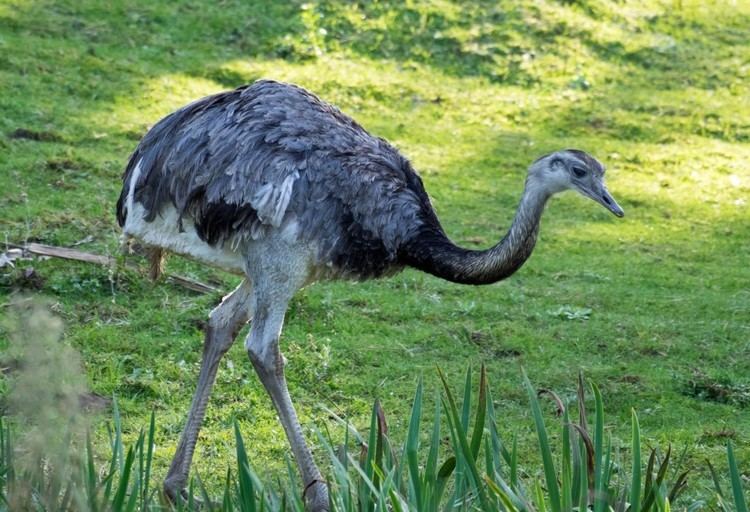
Rhea pennata was not always in the genus Rhea. In 2008, the SACC, the last holdout, approved the merging of the genera, Rhea and Pterocnemia on August 7, 2008. This merging of genera leaves only the genus Rhea. A former third species of rhea, Rhea nana, was described by Lydekker in 1894 based on a single egg found in Patagonia, but today no major authorities consider it valid.
Description
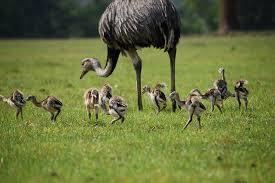
Rheas are large, flightless birds with grey-brown plumage, long legs and long necks, similar to an ostrich. Large males of R. americana can reach 170 cm (67 in) tall at the head, 100 cm (39 in) at the back and can weigh up to 40 kg (88 lb), The lesser rhea is somewhat smaller as they are only 90 cm (35 in) tall at the back. Their wings are large for a flightless bird (250 cm (8.2 ft)) and are spread while running, to act like sails. Unlike most birds, rheas have only three toes. Their tarsus has 18 to 22 horizontal plates on the front of it. They also store urine separately in an expansion of the cloaca.
Distribution and habitat
Rheas are from South America only and are limited within the continent to Argentina, Bolivia, Brazil, Chile, Paraguay, Peru, and Uruguay. They are grassland birds and both species prefer open land. The greater rheas live in open grasslands, pampas, and chaco woodlands. They prefer to breed near water and prefer lowlands, seldom going above 1,500 metres (4,900 ft). On the other hand, the lesser rhea will inhabit most shrubland, grassland, even desert salt puna up to 4,500 metres (14,800 ft).
A small population of rheas has emerged in northeastern Germany, after several couples escaped from an exotic meat farm near Lübeck in the late 1990s. Contrary to expectations, the large birds have adapted well to the conditions in the German countryside. Currently there is a population of well over 100 birds in an area of 150 square kilometres (58 sq mi) between the river Wakenitz and the A20 motorway, slowly expanding eastwards. A monitoring system has been in place since 2008.
Individual and flocking
Rheas tend to be silent birds with the exception being when they are chicks or when the male is seeking a mate. During breeding season, the male will attempt to attract females by calling. This call is a loud booming noise. While calling like this, they will lift the front of their body, ruffle their plumage, all while keeping their neck stiff. They will then extend and raise their wings, and run short distances, alternating with their wings. He may then single out a female and walk alongside or in front of her with a lowered head and spread wings. If the female notices him, then he will wave his neck back and forth in a figure-eight. Finally, a female may offer herself and copulation will commence.
During the non-breeding season they may form flocks of between 20 and 25 birds, although the lesser rhea forms smaller flocks than this. When in danger they flee in a zig-zag course, using first one wing then the other, similar to a rudder. During breeding season the flocks break up.
Diet
For the most part, rheas are vegetarian and prefer broad-leafed plants but they also eat fruits, seeds and roots, as well as insects such as grasshoppers and small reptiles and rodents. Young rheas generally eat only insects for the first few days. Outside of the breeding season they gather in flocks and feed with deer and cattle.
Reproduction
Rheas are polygamous, with males courting between two and twelve females. After mating, the male builds a nest, in which each female lays her eggs in turn. The nest consists of a simple scrape in the ground, lined with grass and leaves. The male incubates from ten to sixty eggs. The male will use a decoy system and place some eggs outside the nest and sacrifice these to predators, so that they won't attempt to get inside the nest. The male may use another subordinate male to incubate his eggs, while he finds another harem to start a second nest. The chicks hatch within 36 hours of each other. The females, meanwhile, may move on and mate with other males. While caring for the young, the males will charge at any perceived threat that approach the chicks including female rheas and humans. The young reach full adult size in about six months but do not breed until they reach two years of age.
Status and conservation
The numbers of both the greater and puna rhea are decreasing as their habitats are shrinking. Both are considered near threatened by the IUCN. The IUCN also states that they are both approaching vulnerable status. The lesser rhea is classified as least concern.
Human interaction
Rheas have many uses in South America. Feathers are used for feather dusters, skins are used for cloaks or leather, and their meat is a staple to many people.
The gaucho people traditionally hunt rheas on horseback, throwing bolas or boleadoras, a throwing device consisting of three balls joined by rope, at their legs which immobilises the bird. The rhea is pictured on Argentina's 1 Centavo coin minted in 1987, and on the Uruguayan 5 peso coin.
